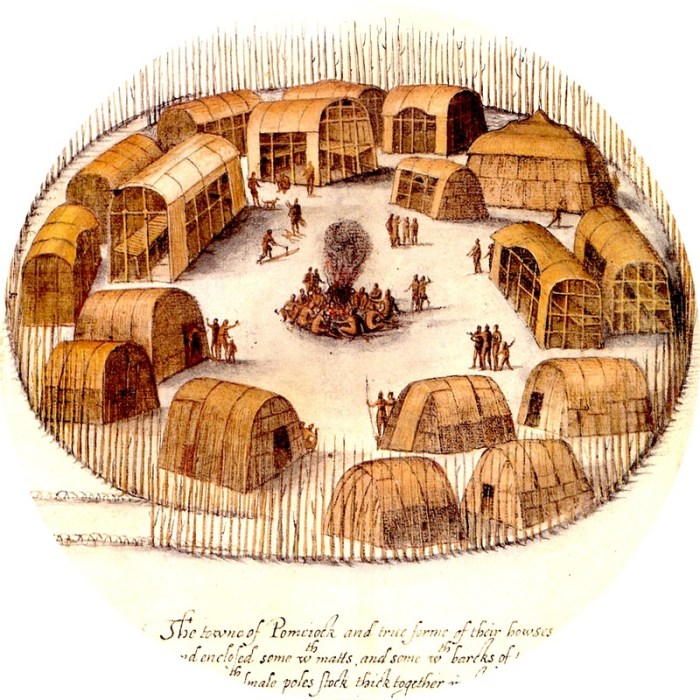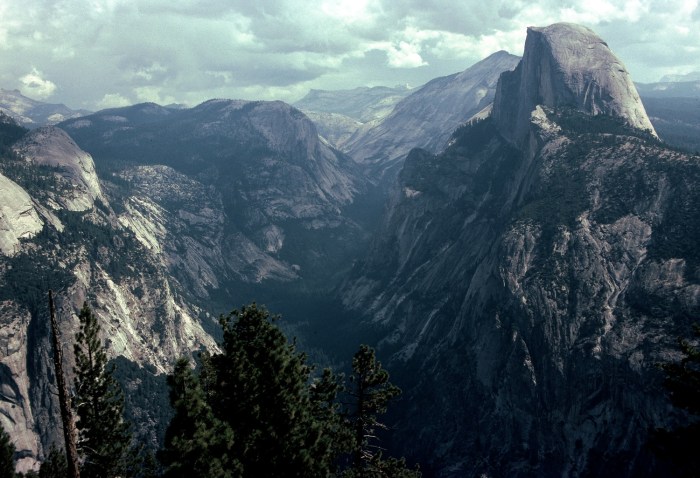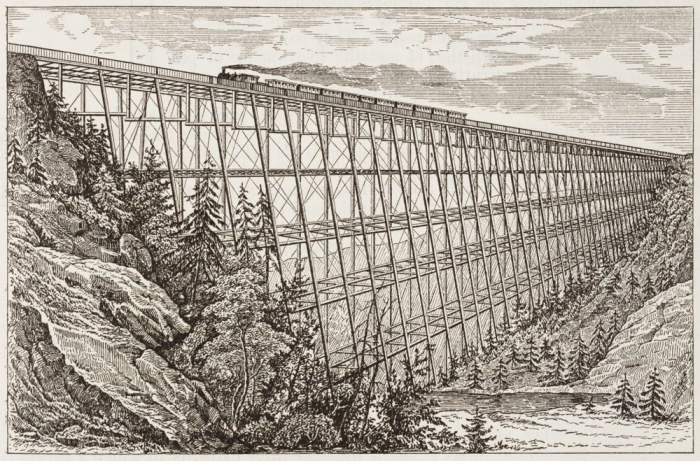Geography and the environment apush – Geography and the Environment: Shaping American History and Society is an in-depth exploration of the profound interplay between the physical environment and the development of American society. From the earliest settlements to the present day, geography has played a pivotal role in shaping economic activities, settlement patterns, political boundaries, and cultural identities.
This comprehensive analysis examines the major geographic regions of the United States, their unique physical characteristics, and their impact on regional history, economy, and culture. It also delves into the environmental challenges facing the nation, such as climate change, pollution, and resource depletion, tracing their historical roots and assessing their societal impact.
Historical Interplay of Geography and the Environment
The physical geography of the United States has had a profound influence on the development of American society. The vast expanse of the continent, its diverse climate, and its abundant natural resources have all shaped economic activities, settlement patterns, and political boundaries.
For example, the fertile soils of the Midwest have made the region a major agricultural center. The Mississippi River has served as a vital transportation route, connecting the interior of the country to the Atlantic coast. And the Appalachian Mountains have acted as a barrier to westward expansion, influencing the settlement of the country.
Environmental Factors and Economic Activities, Geography and the environment apush
- The availability of natural resources, such as timber, minerals, and water, has played a major role in the development of American industries.
- The climate of a region has also influenced economic activities. For example, the warm climate of the South has made it a major producer of cotton and other crops.
- The geography of a region can also affect the cost of transportation and trade, which can have a significant impact on economic development.
Environmental Factors and Settlement Patterns
- The availability of water and fertile land has been a major factor in determining where people have settled in the United States.
- The climate of a region can also influence settlement patterns. For example, the cold winters of the North have made it less desirable for people to settle there.
- The geography of a region can also affect the ease of transportation and communication, which can influence settlement patterns.
Environmental Factors and Political Boundaries
- The physical geography of the United States has also influenced the development of political boundaries.
- For example, the Appalachian Mountains have served as a natural boundary between the eastern and western United States.
- The Mississippi River has also served as a boundary, separating the North from the South.
Human activities have also had a significant impact on the environment of the United States. The clearing of forests for agriculture, the construction of dams and canals, and the pollution of air and water have all altered the natural landscape.
These changes have had a variety of consequences, including the loss of biodiversity, the degradation of water quality, and the increase in greenhouse gas emissions. In turn, these environmental changes have had a negative impact on human health and well-being.
Geographic Regions and Their Impact

The United States is a vast and diverse country, encompassing a wide range of geographic regions. These regions have played a significant role in shaping the nation’s history, economy, and culture. The physical characteristics of each region have influenced the development of its unique industries, settlement patterns, and political dynamics.
The major geographic regions of the United States include the Northeast, the Southeast, the Midwest, the Southwest, and the West. Each region has its own distinct physical features, climate, and natural resources. These factors have contributed to the development of different economic activities, cultural traditions, and political ideologies in each region.
The Northeast
The Northeast is a region of rolling hills, fertile valleys, and a rugged coastline. The region is home to some of the oldest cities in the United States, including Boston, New York City, and Philadelphia. The Northeast has a long history of manufacturing, trade, and finance.
It is also a major center of education and culture.
The Southeast
The Southeast is a region of rolling hills, coastal plains, and swamps. The region is home to some of the largest cities in the United States, including Atlanta, Miami, and New Orleans. The Southeast has a long history of agriculture, forestry, and tourism.
It is also a major center of manufacturing and technology.
The Midwest
The Midwest is a region of vast prairies, rolling hills, and Great Lakes. The region is home to some of the largest cities in the United States, including Chicago, Detroit, and Minneapolis. The Midwest has a long history of agriculture, manufacturing, and transportation.
It is also a major center of education and research.
The Southwest
The Southwest is a region of deserts, mountains, and plateaus. The region is home to some of the largest cities in the United States, including Los Angeles, Phoenix, and San Diego. The Southwest has a long history of mining, agriculture, and tourism.
It is also a major center of technology and entertainment.
The West
The West is a region of mountains, forests, and deserts. The region is home to some of the largest cities in the United States, including San Francisco, Seattle, and Denver. The West has a long history of mining, logging, and agriculture.
It is also a major center of technology and tourism.
The geographic regions of the United States have had a profound impact on the nation’s history, economy, and culture. The physical characteristics of each region have influenced the development of its unique industries, settlement patterns, and political dynamics. These regions continue to play a vital role in shaping the future of the United States.
Environmental Issues and Sustainability

The United States faces significant environmental challenges that impact its ecosystems, human health, and economic well-being. These issues stem from a complex interplay of historical practices, population growth, and technological advancements.
The historical roots of environmental issues can be traced to the nation’s rapid industrialization and urbanization. The exploitation of natural resources, such as forests and fossil fuels, along with the discharge of pollutants into the environment, has resulted in widespread degradation and pollution.
Climate Change
Climate change poses a major threat to the United States, leading to extreme weather events such as hurricanes, droughts, and heat waves. Rising sea levels threaten coastal communities and infrastructure. The burning of fossil fuels releases greenhouse gases, contributing to global warming and climate change.
Pollution
Air and water pollution continue to be significant concerns in the United States. Air pollution from vehicles, factories, and power plants contributes to respiratory illnesses and cardiovascular disease. Water pollution from agricultural runoff, sewage, and industrial waste contaminates water sources and harms aquatic ecosystems.
Resource Depletion
The United States consumes a significant amount of natural resources, including water, energy, and minerals. Over-extraction and unsustainable practices have led to depletion of these resources, threatening future generations.
Government Policies and Citizen Initiatives
The government has implemented various policies to address environmental concerns, such as the Clean Air Act, Clean Water Act, and Endangered Species Act. These regulations aim to reduce pollution, protect natural resources, and preserve biodiversity.
Citizen initiatives have also played a crucial role in raising awareness and advocating for environmental protection. Non-profit organizations, community groups, and individuals have engaged in activism, research, and education to promote sustainable practices and protect the environment.
Geographic Perspectives on American History

Geography has played a pivotal role in shaping the course of American history. From the earliest settlements to the present day, the physical and human geography of the United States has influenced everything from wars and westward expansion to industrialization and urbanization.
One of the most important geographic factors in American history is the country’s vast size and diversity. The United States is the third largest country in the world, with a land area of over 9.8 million square kilometers. This vast expanse of land has allowed the United States to develop a wide variety of economies and cultures, from the agricultural heartland of the Midwest to the industrial Northeast and the sun-soaked beaches of California.
Geographic Factors and Key Events in American History
Geography has also played a key role in many of the most important events in American history. For example, the American Revolution was fought in part over control of the Ohio River Valley, which was seen as a vital gateway to the West.
The Civil War was fought over the issue of slavery, but it was also a conflict between the industrialized North and the agricultural South. And the westward expansion of the United States was driven in large part by the desire for new land and resources.
Historical Figures and Geography
Many historical figures have used geography to their advantage or disadvantage. For example, George Washington used his knowledge of the terrain to defeat the British at the Battle of Trenton. And Abraham Lincoln used the Mississippi River to divide the Confederacy during the Civil War.
Comparing and Contrasting Environmental Policies

Environmental policies in the United States have been shaped by a complex interplay of political ideologies, scientific advancements, and public opinion. Different presidents and political parties have adopted varying approaches to environmental protection, reflecting their respective beliefs about the role of government, the importance of economic growth, and the urgency of addressing environmental challenges.
Motivations and Effectiveness of Environmental Policies
The motivations behind environmental policies can be categorized into three main groups:
- Conservation:Protecting natural resources for future generations and preserving biodiversity.
- Pollution Control:Regulating the release of harmful substances into the environment to protect human health and ecosystems.
- Climate Change Mitigation:Reducing greenhouse gas emissions to combat global warming and its associated impacts.
The effectiveness of environmental policies depends on several factors, including:
- Scientific Evidence:Policies based on sound scientific research are more likely to be effective in addressing environmental challenges.
- Enforcement and Compliance:Strong enforcement mechanisms and compliance measures are essential for ensuring that policies are implemented and followed.
- Public Support:Public support for environmental policies is crucial for their long-term success, as it can influence political decision-making and encourage individual action.
Political Ideology and Environmental Decision-Making
Political ideology plays a significant role in shaping environmental policies. Conservative ideologies tend to emphasize the importance of economic growth, limited government intervention, and individual responsibility. As a result, conservative policies often prioritize deregulation, market-based solutions, and voluntary environmental initiatives.
In contrast, liberal ideologies place a higher value on social justice, environmental protection, and government regulation. Liberal policies typically focus on stricter environmental standards, increased government spending on environmental protection, and international cooperation to address global environmental challenges.
FAQ: Geography And The Environment Apush
What is the significance of geography in American history?
Geography has played a crucial role in shaping the development of American society, influencing settlement patterns, economic activities, political boundaries, and cultural identities.
How have environmental factors influenced American history?
Environmental factors, such as climate, natural resources, and topography, have significantly impacted American history. They have influenced the location of settlements, the development of industries, and the course of wars.
What are the major environmental challenges facing the United States today?
The United States faces a range of environmental challenges, including climate change, pollution, and resource depletion. These challenges have significant implications for human health, economic prosperity, and national security.